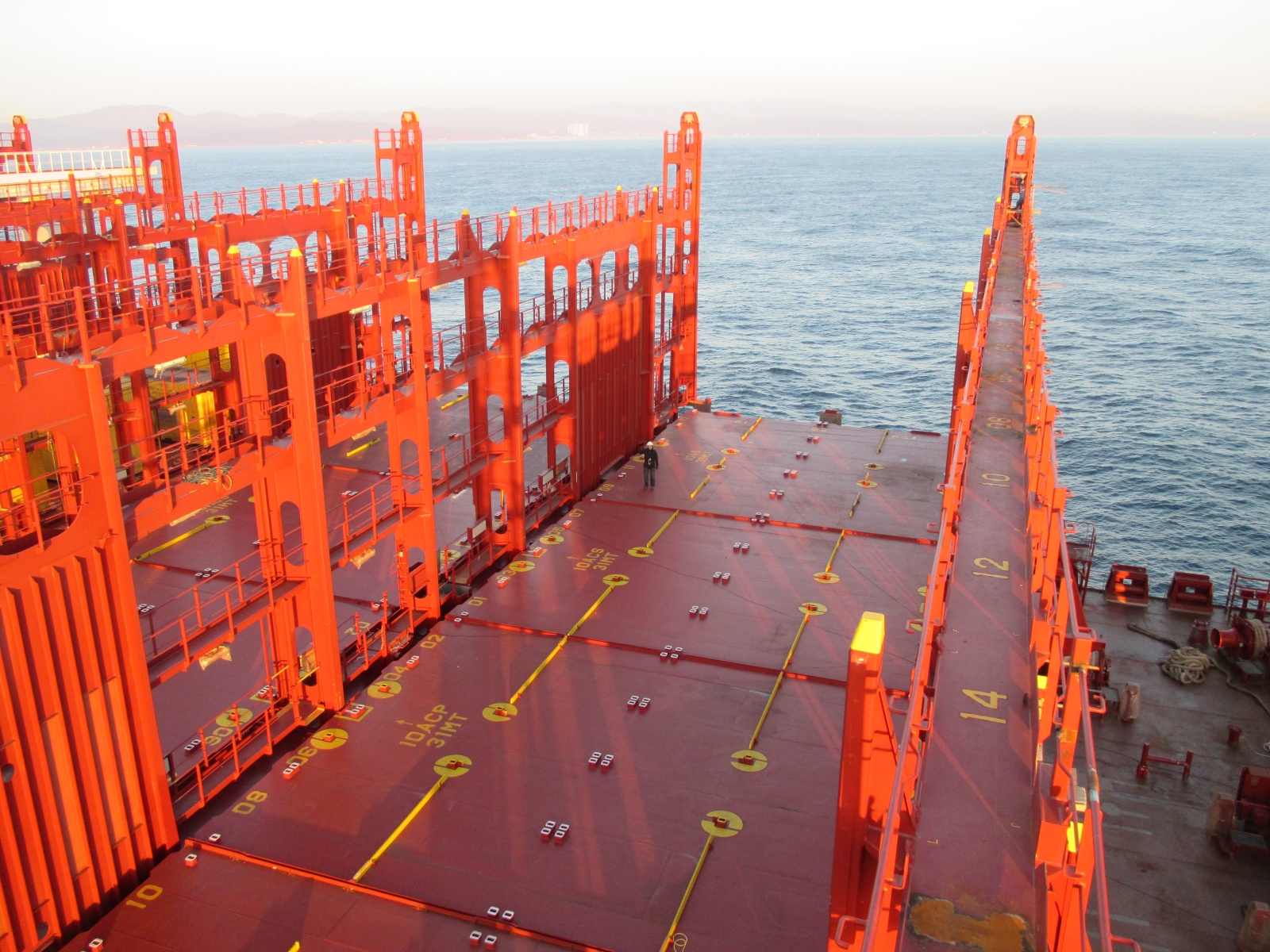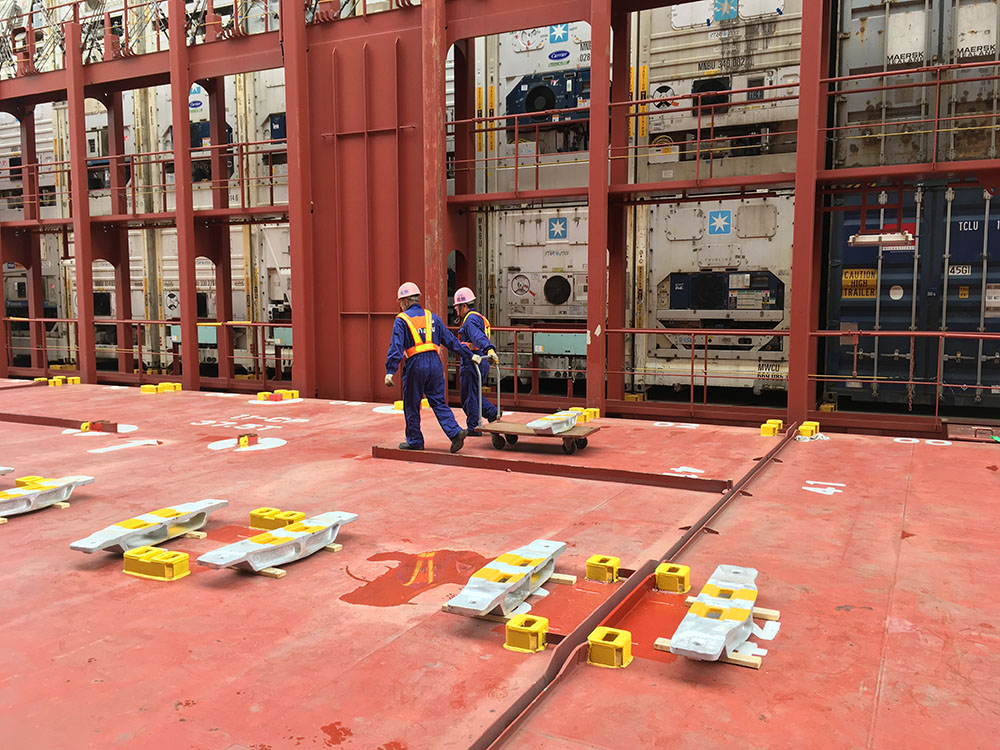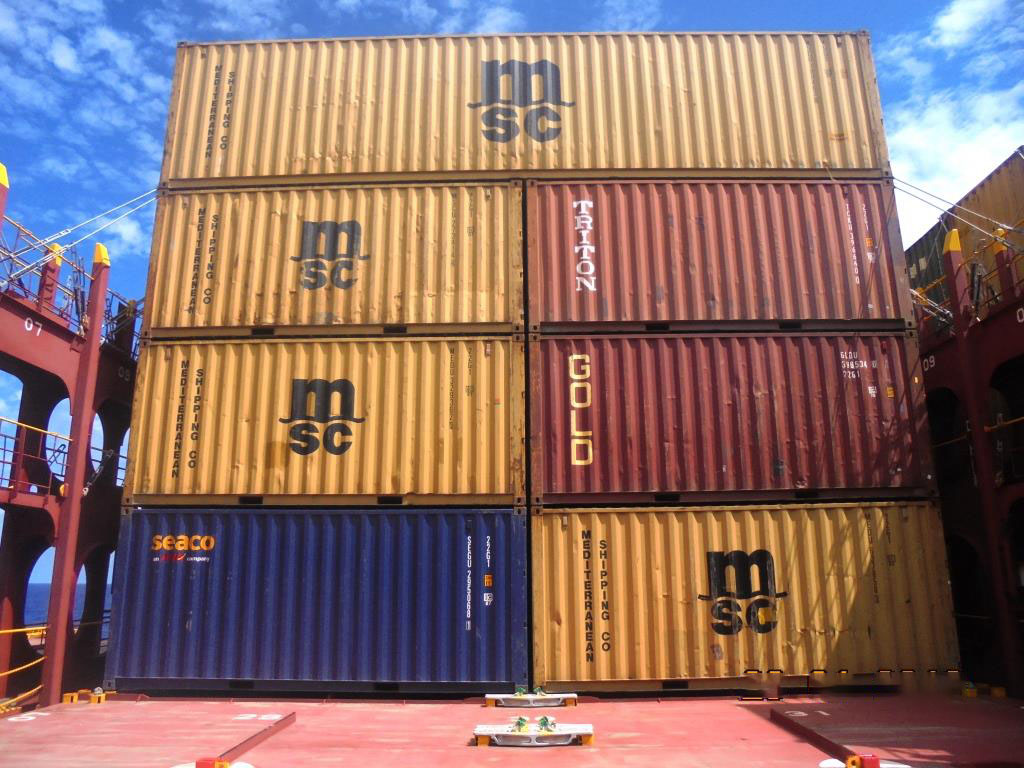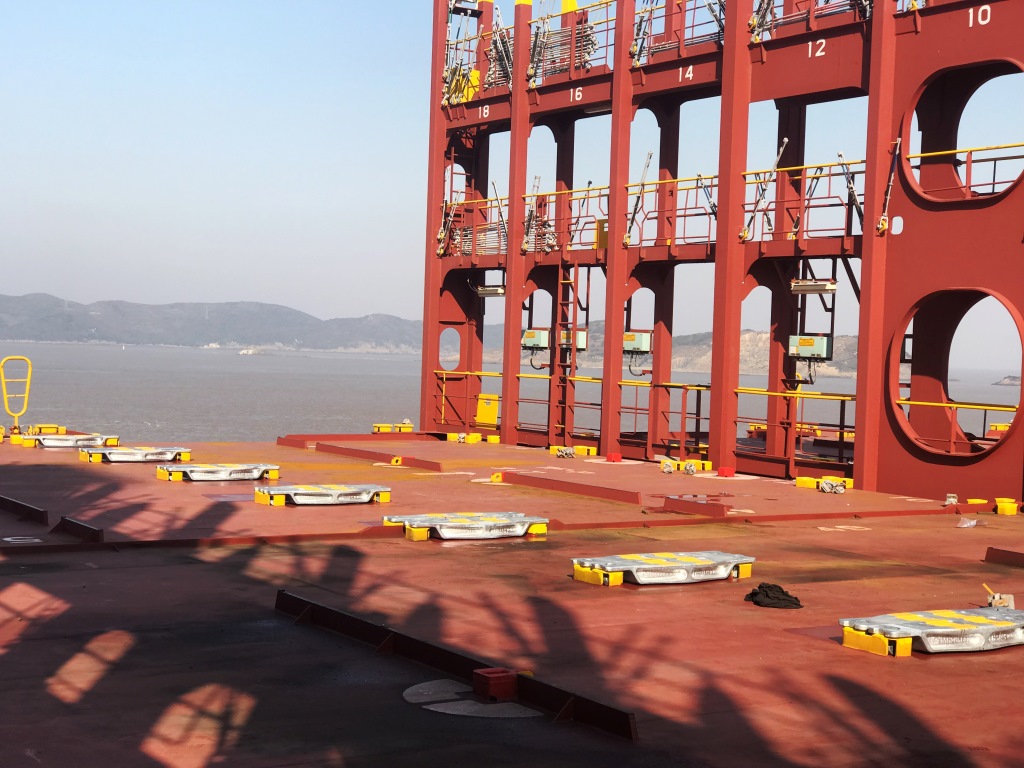Cargo Boost
MacGregor Cargo Boost can increase cargo carrying capacity by up to 15%
MacGregor Cargo Boost
Cargo Boost for container ships ensures more competitive vessels by maximising cargo space utilisation, efficiency and lower emissions per transported unit of cargo. Usually a randomly chosen container ship can carry about 80% of her informed theoretical TEU-capacity i.e. a 10.000TEU ship can load 8.000TEU. It is possible to raise utilisation percentage from 80% to close to 100% in some cases, but typically 90% is a good target when starting the project.
Carbon calculator
Enhance the efficiency and sustainability of your vessel by finding out how much CO2 emissions you could reduce on your vessel with MacGregor`s Container Cargo System Upgrade.


Kudos to Enesel, SFL Corporation and Hapag-Lloyd
We are excited to share the remarkable achievement of the Thalassa series ships, Norfolk Express and Savannah Express (formerly Thalassa Hellas owned by Enesel Group and Thalassa Patris owned by SFL Corporation), as they embark on a new era of efficiency by upgrading their cargo systems with MacGregor Cargo Boost.
MacGregor cargo-stowage optimisation enhances cargo-carrying efficiency
A holistic and tailored approach to designing stowage solutions is helping owners increase their earning potential and minimise the environmental footprint of their ships, according to MacGregor.

Cargo Boost Part 1 - Why?
Why are cargo system improvements made for sailing container ships? Learn in 3 minutes!
This is the first episode of four presentations, which revolve around answering a series of fundamental questions - why, what, how, and when cargo boosts are done.
In this video series Arto Toivonen gives you a short cut to the world of cargo boosts.
Cargo Boost Part 2 - What?
What kind of elements can a cargo boost consist of? Check out the video and dive into the world of the techniques behind the Cargo boost!
The lashing bridge elevations, ISO-gap adapters, Mickey Mouses, and much more are presented!
This is the second episode of four presentations.
Cargo Boost Part 3 - How?
How can you determine the type of cargo system upgrade that is suitable for your ship? Watch the video to make smarter decisions!
What kind of study needs to be conducted, how to simplify understanding of the outcomes, and especially how to implement the cargo system upgrade in an intelligent manner!
This is the third episode of four presentations.
Cargo Boost Part 4 - When?
When is the right time to execute a cargo system upgrade? The sooner, the better.
Every single day of operating an ineffective vessel will cost you in fuel and lost revenue. Learn what you can do today!
This is the fourth and final episode of four presentations.
What are the elements of the cargo system and how can they be boosted to the next level
Container ships’ cargo system consists of hatch covers, lashing bridges, lashings, cell guides, deck stanchions and container fixed fittings. Usually the lowest hanging fruit is a ship's documentation like a cargo securing manual. It is possible to get significant improvement by just doing a paper exercise – not touching the steel at all. MacGregor has done paper exercises for hundreds of ships in the last few years.
The most usual steel boosts are ISO Gap adapters on hatch covers, lashing bridge elevations and mickey mouses and changing internal lashings to external lashings. But the steel boost can be whatever which is found to be reasonable – only imagination limits us.
We at MacGregor are eagerly waiting to study the best improvement proposals for you. Together with you.

MacGregor ISO Gap Adapter
ISO Gap adapter is a boltable loose fitting, which is installed on existing container sockets with 20ft lashing gap in the middle of hatch covers. ISO Gap adapter enables mixed stow loading of containers after implementation. Mixed stow means the possibility to load 40ft containers on top of two 20ft containers.
Benefits
- Mixed stow improves cargo carrying efficiency
- More flexibility in planning and port operations
- With a mixed stow setup there are no loose lashings on hatch covers. All lashing is carried out from lashing bridges
- Happier crew


Benefits of having mixed stow possible are tied to better controlling of GM-value of the ship. Typical ship with adapters is with a beam of 42 meters and more, this kind of ships are relatively stiff and benefit from having heavier loading on deck. Practically mixed stow allows moving heavy 20ft containers in hold onto deck underneath 40ft containers. This drastically moves the ship’s cargo’s vertical center of gravity upwards, which narrows the gap between G and M. Higher G and further lower GM enables better loadability and makes the ship’s rolling movements smoother for the crew.
Boltable ISO Gap adapters can be installed on big container vessels in 60 hours from discharging the containers on deck to loading them back again. There are no hotworks needed except removing lashing eye plates on the lashing gap which are in way of the adapters.
ISO Gap adapter upgrade projects include, pre-inspection on board, measurement protocols, related loose and fixed fittings, installation assistance, lashing manual update, compatibility check and crew training.
Where we are today
- First welded ISO Gap adapters delivered in 2014
- First boltable ISO Gap adapters delivered in 2017
- Total number delivered more than 30.000 pcs
- Very reliable product
- Positive feedback from shipping line management, planners and vessel crews
- High retention rate of customers for new projects


Features
- Boltable ISO Gap adapters are connected with bolt and cone to the twistlock foundations on the hatch covers
- Standard design, type IA-Q with four different lengths, IA-Q1, Q2, Q3 and Q4 to suit the foundation lay-out in question
- Special midlock, AFC-4, is needed for the IA-Q adapter
- Boltable adapters are made of high-tensile heat treated cast steel
- Surface treatment is hot dip galvanization
MacGregor Cargo System Insights
Welcome to MacGregor Cargo System Insights. In the video Arto Toivonen and Atte Virta are discussing the MacGregor ISO Gap adapter.

Cargo Boost ideas for lashing bridges
Do you have a good container ship with poorly performing lashing bridges? Don’t worry, check out these 3 proven ideas.
Read blog